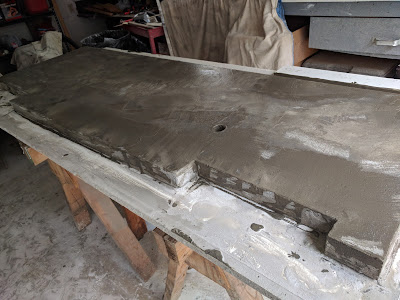forgery

Ronny and Matt from Church invited some youth to try simple forging. Ronny brought an anvil and some know-how. Matt brought a little propane forge. Starting from some simple rod stock, a couple guys each got to pound on the red hot metal: to make a stylish little letter-opener: I got to hammer too, and made a wee "garlic cleaver": I didn't do much of the metal - i just supplied some dumb hammering while Ronny moved the work - but I was proud of the handle: I cut off 5" of an oak branch that had fallen during the recent storm, shaped it with a rasp, then burned it with a blowtorch to get the color. I sealed it with a quick clear coat spray. The handle only took about 90 minutes (mostly the rasp), and I was pleased with the comfort and color. I mounted it on the blade by drilling a hole in the wood (slightly undersized for the tang), heating up the metal to really hot, and shoving them together. The hot metal burned its sha...





